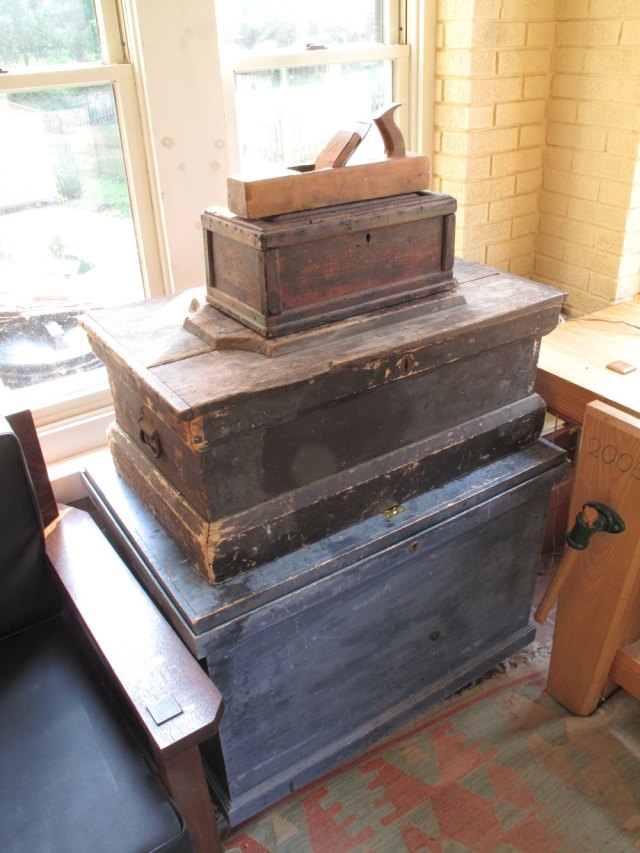
When it comes to finishing a tool chest, I feel a bit like Henry Ford. I like any tool chest finish as long as it’s paint.
That said, my finishing procedure outlined in “The Anarchist’s Tool Chest,” has bemused some readers. It shouldn’t work – adding a water-based product to a thing covered in oil, right? It seems like the folly of painting a live duck with latex.
Well it does work. But before I get into the details, let me say that my goal for finishing the chest was to have a chest that was mostly black with red below on the rubbed-through areas that will inevitably occur.
You don’t have to do this. You can go to the store and get some latex paint in any color and go to town on your chest.
But here is what I did and why.
1. Raise the grain of the bare wood with a wet rag and sand down the nibs with #220 sandpaper after the water has dried. This will result in less grain-raising when you apply the water-based paint.
2. Apply two coats of milk paint, sanding between coats with a #330 sanding sponge. This will give you a chalky look. Even a little pastel-y. You can leave it like this and be done. Or you can go on to the next step.
Milk paint is easy to use – just follow the directions on the box. If you want to get great results, Mike Dunbar wrote an article about how to use it in Popular Woodworking’s February 2010 issue. It is, hands down, the best explanation for best practices with this paint.
3. You can now go one of three ways. A) Add a coat of wax and be done with it. Wax will remove the chalky look. B) Add a coat of boiled linseed oil. Oil will remove the chalky look and add a little amber. You can stop after the oil, or you can let it cure and add more paint over it. C) Go right to adding more paint of a different color.
I added oil, let it cure and then applied more paint. Why? I didn’t want the chalky look to show when the topcoat rubbed through.
4. Add another color of paint. It can be milk paint, latex or oil-based paint. All three will stick just fine to paint or cured oil. If you use milk paint or oil-based paint, the top color will be quite durable. I didn’t want a durable topcoat. I wanted it to wear through sooner rather than later. So I added two coats of black latex. After six months of use, the paint is starting to wear a bit at the corners – it’s not dramatic like a crackle finish.
So there you have it. No matter what painted finish you choose, it will look great – after it gets beat up in your shop for a while. Pristine tool chests look wrong to my eye, probably because there are so few of them.
— Christopher Schwarz